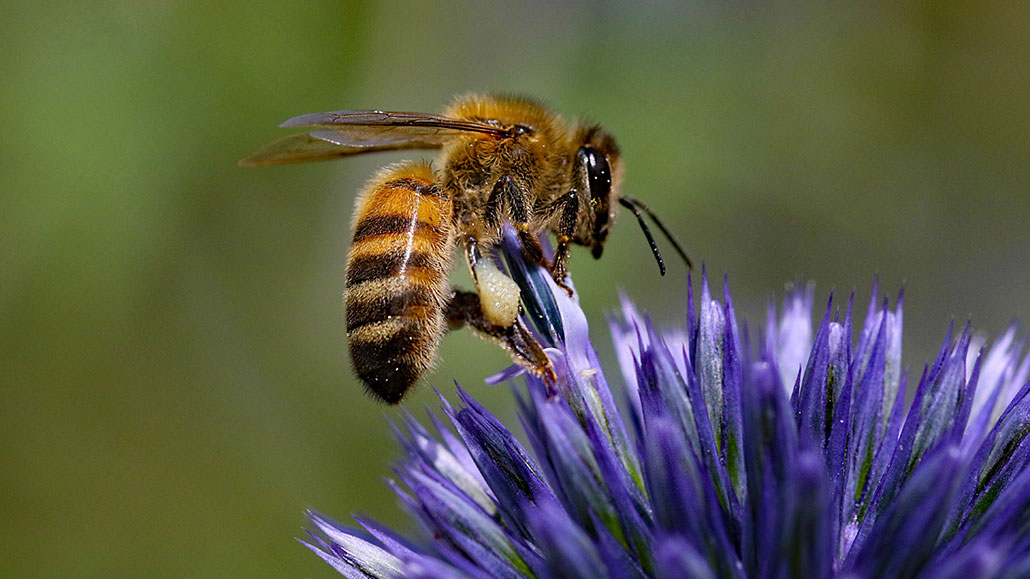Questions for “Abdominal fuzz makes bee bodies super slippery”

As a honeybee bends its abdomen, segments slide over each other like pieces of a telescope.
Susan Walker/Moment/Getty Images Plus
Come explore with us!

As a honeybee bends its abdomen, segments slide over each other like pieces of a telescope.
Susan Walker/Moment/Getty Images Plus
To accompany “Abdominal fuzz makes bee bodies super slippery”
1. List at least five facts about honeybees.
2. Insects don’t have bones. What gives their bodies a firm structure?
1. In bees, what is a cuticle?
2. What bee trait does Jieliang Zhao envision being added, one day, to future umbrellas?
3. How big are the strands of bee fuzz that Zhao’s team studied and where are they? What is distinctive about their shape?
4. How does the fuzz affect friction on the bee — and where?
5. How much did the bee’s fuzz change that friction?
6. How does that change in friction affect energy use by bees, according to Neil Canter?
1. Not all segments of a bee’s cuticle have fuzz. Why do you think that might be? How might some fuzz-free areas help the bee?
2. Name three places in your environment where you encounter friction. If friction becomes a problem, what do you (or someone you know) do to counteract it?
3. When is friction a good thing? Give one example from your daily life.
Register to access:
An error occurred. Please try again.
Already Registered? Enter your e-mail address above.